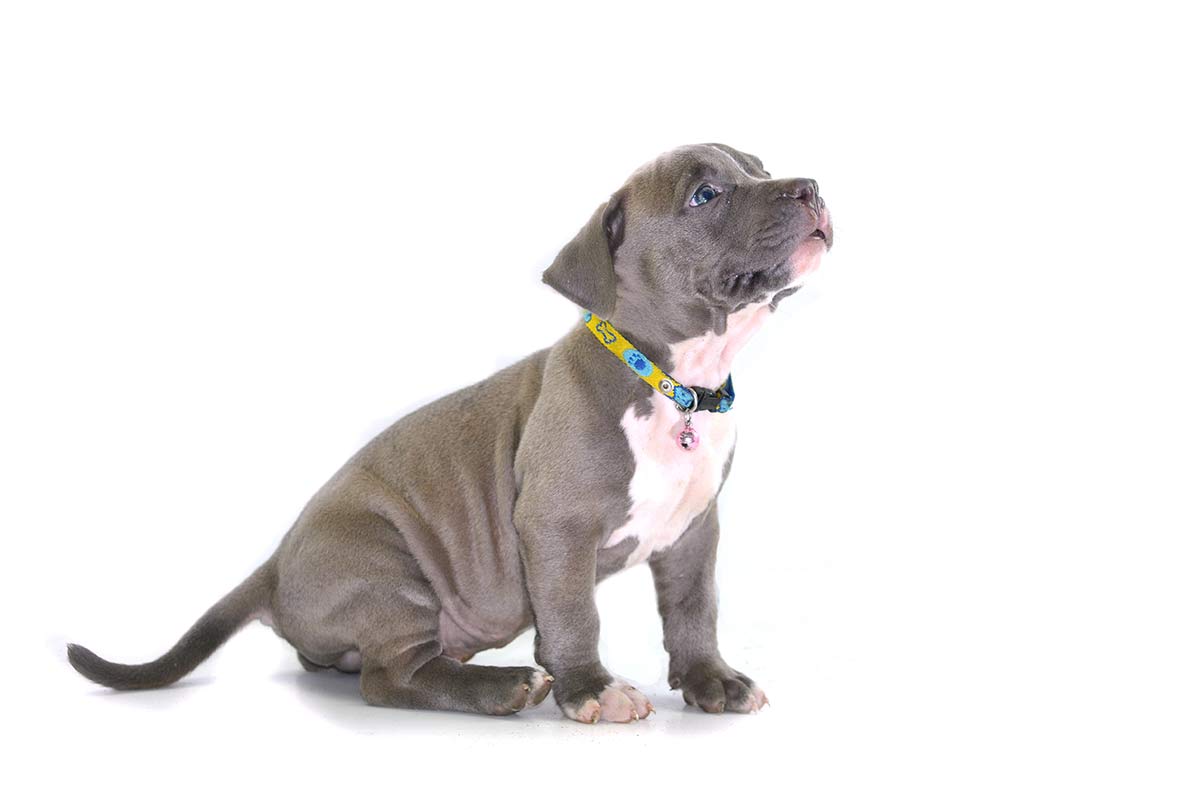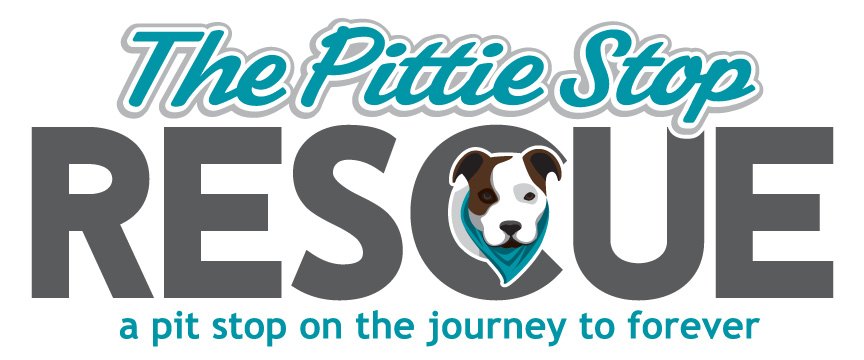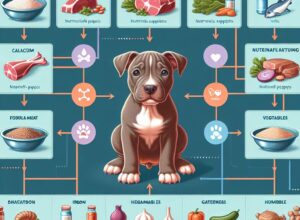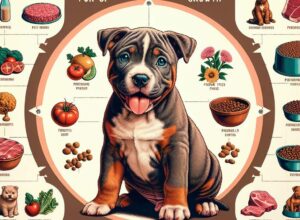
Embarking on the BARF (Biologically Appropriate Raw Food) Journey for Your Pitbull Puppy
Welcome to the world of natural feeding for your pitbull puppy! You’re about to embark on an exciting journey that can lead to a healthier, happier pup. The BARF diet, which stands for Biologically Appropriate Raw Food, is all about feeding your dog the way nature intended. It’s a raw-based diet that can fuel your pitbull puppy’s growth and development in the most natural way possible. So, let’s get started on this path together!
What is the BARF Diet?
- Raw meats and bones form the foundation, providing protein and calcium.
- Organ meats like liver and kidneys offer a wealth of vitamins and minerals.
- Fruits and vegetables are included for their fiber, enzymes, and phytonutrients.
- Seeds and nuts bring essential fats and oils to the mix.
- A small amount of dairy, such as yogurt or kefir, can be included for probiotics.
The BARF diet is a carefully balanced, species-appropriate feeding plan that mimics what your pitbull puppy would eat in the wild. It’s a holistic approach to nutrition that focuses on raw, natural foods.
The Benefits of Raw Feeding
Why choose raw? It’s simple. A BARF diet can offer your pitbull puppy a range of health benefits that commercial kibble might not provide. Here’s what you can expect:
- Better digestion: Raw foods are easier for puppies to break down and absorb.
- Healthier skin and coat: Natural oils in raw food can lead to a shinier coat and less itchy skin.
- Improved dental health: Chewing on raw bones naturally helps to keep teeth clean and gums healthy.
- Enhanced energy levels: High-quality protein and fats in a BARF diet can boost your pup’s vitality.
- Reduced allergy symptoms: Eliminating processed foods and grains can alleviate some allergic reactions.
Feeding raw is about providing your pitbull puppy with the nutrients they need in the most natural and absorbable form. It’s a commitment to their health from the inside out.
Setting Up for Success: BARF Diet Basics
Before diving into raw feeding, it’s crucial to understand the basics. A successful BARF diet is more than just serving raw meat. It’s about balance, variety, and understanding your puppy’s nutritional needs. So, let’s set the foundation for a thriving BARF diet.
Essential Components of a Pitbull Puppy BARF Diet
A well-rounded BARF diet for your pitbull puppy includes several key components:
- Protein: This is the building block of your puppy’s diet, vital for growth and repair.
- Fats: Essential for energy, cell function, and the absorption of certain vitamins.
- Carbohydrates: While not the focus, they provide fiber and other nutrients.
- Vitamins and minerals: These are crucial for immune function, bone health, and more.
- Water: Always ensure your pitbull puppy has access to fresh, clean water.
Remember, each component plays a unique role in your puppy’s health. It’s not just about the ingredients but how they work together to support growth and vitality.
Understanding the Ratios: Muscle Meat to Bones
Getting the ratios right is key to a balanced BARF diet. Here’s a simple guide to start:
- Muscle Meat: About 50-60% of the diet should be made up of muscle meat, which is the primary protein source.
- Raw Edible Bones: Aim for around 10-20%, which provide calcium and other minerals.
- Organs: Organs, especially liver, should make up about 5-10% of the diet.
- Fruits and Vegetables: These should constitute about 20-30%, offering fiber and essential nutrients.
Remember, these ratios are a starting point. You’ll need to adjust based on your puppy’s individual needs, activity level, and growth rate. But don’t worry, we’ll guide you every step of the way.
Navigating Potential Pitfalls
As with any dietary change, transitioning to a BARF diet can come with its challenges. Being aware of these potential pitfalls can help you navigate them with ease, ensuring your pitbull puppy reaps the full benefits of raw feeding without any unnecessary setbacks.
Overcoming Common Transitional Hurdles
- Upset Stomach: It’s normal for puppies to experience digestive changes. Start with small amounts of raw food and gradually increase.
- Picky Eating: Some puppies may be hesitant to try new textures. Be patient and mix raw food with their current diet to ease the transition.
- Bone Chewing Difficulties: Not all puppies are used to chewing bones. Begin with softer options like chicken necks and supervise mealtime.
- Time and Preparation: Raw feeding requires planning. Set aside time each week for meal prep to maintain a consistent feeding schedule.
- Balance Over Time: Nutritional balance is achieved over time, not every meal. Focus on providing a variety of foods throughout the week.
Remember, patience is key. Your puppy may take some time to adjust, but with perseverance, you’ll both find your stride in the BARF diet lifestyle.
Addressing Nutritional Concerns
One of the most common concerns with a BARF diet is ensuring your pitbull puppy gets all the necessary nutrients. Here’s how to address these concerns:
- Consult a Vet: Work with a vet familiar with raw diets to ensure your puppy’s nutritional needs are met.
- Use Supplements Wisely: Some puppies may need supplements, like omega-3 oils or probiotics, to complete their diet.
- Vary Protein Sources: Rotate between different meats to provide a range of amino acids and nutrients.
- Include Organ Meats: Organs are nutrient-dense. Make sure they’re part of your puppy’s regular diet.
- Monitor Growth and Health: Keep an eye on your puppy’s development and adjust the diet as needed.
By staying informed and attentive, you can ensure your pitbull puppy thrives on a BARF diet without missing out on essential nutrients.
Creating a BARF Diet Plan: A Step-by-Step Guide
Ready to create a BARF diet plan for your pitbull puppy? Here’s a step-by-step guide to help you get started:
Calculating Portion Sizes
Portion sizes will vary depending on your puppy’s age, weight, and activity level. A general rule is to feed approximately 2-3% of your puppy’s expected adult weight per day, divided into two meals. For example, if your pitbull puppy is expected to weigh 50 pounds as an adult, you would feed 1-1.5 pounds of food daily.
Sample Meal Plans and Recipes for Pitbull Puppies
Here’s a sample meal plan to give you an idea of what a day on a BARF diet might look like for your pitbull puppy:
Breakfast: A mix of ground turkey, a small handful of blueberries, and a spoonful of plain yogurt.
Dinner: Beef chunks, a raw chicken wing (for bone content), and a medley of pureed leafy greens and carrots.
And here’s a simple recipe to try:
Puppy Power Patties:
– 4 pounds ground beef (80/20 mix)
– 1/2 pound chicken livers
– 1/2 pound pureed vegetables (like spinach and pumpkin)
– 1/4 cup ground flaxseed or chia seeds
Mix all ingredients and form into patties. Freeze and thaw as needed for meals.
With these guidelines and examples, you’re well on your way to providing a nutritious, balanced BARF diet for your pitbull puppy. Remember, every puppy is unique, so don’t hesitate to tweak the recipes and meal plans to suit your furry friend’s preferences and needs.
Finding the Right Suppliers for Fresh Ingredients
Finding high-quality, fresh ingredients is crucial for a successful BARF diet. You’ll want to look for suppliers who offer a variety of raw meats, organ meats, and bones, as well as fresh fruits and vegetables. Start by checking local butchers, farmers’ markets, and specialty pet stores. Many places now offer pre-made raw food blends specifically for dogs. You can also look for online retailers that deliver fresh, human-grade raw pet food right to your door. Just make sure to do your homework to ensure you’re getting the best quality ingredients for your pup.
Maintaining Balance and Variety in the Diet
A balanced diet is key to keeping your pitbull puppy healthy. This means not just sticking to one type of meat or vegetable. Rotate between beef, chicken, turkey, and fish for proteins, and mix up the veggies with leafy greens, carrots, and squash. The variety will not only provide a range of nutrients but will also keep mealtime exciting for your puppy. Remember, balance doesn’t have to happen at every meal but should be achieved over the course of a week.
Introducing New Foods the Right Way
When it comes to adding new foods to your pitbull puppy’s BARF diet, slow and steady wins the race. Introduce one new food at a time and in small quantities to avoid upsetting their stomach. Watch for any signs of allergies or intolerance, such as itching, redness, or digestive upset. If everything goes well, you can gradually increase the amount. This careful approach helps you identify what works best for your puppy and ensures a smooth dietary transition.
Adjusting the Diet as Your Pitbull Puppy Grows
As your pitbull puppy grows, their nutritional needs will change. Puppies need more protein, fat, and calories to support their rapid growth, but as they transition into adulthood, their diet will need to be adjusted to prevent overfeeding and weight gain. Keep a close eye on their body condition and energy levels, and consult with your vet to determine when it’s time to modify their diet. Regular adjustments are an essential part of maintaining optimal health throughout your pitbull’s life stages.
Monitoring the Health of Your Pitbull Puppy
Keeping an eye on your puppy’s health is essential when feeding a BARF diet. Regular vet check-ups, watching for changes in behavior or appetite, and monitoring their weight and body condition are all important. If you notice any red flags, such as a dull coat, lethargy, or weight loss, it’s time to reassess their diet. A healthy pitbull puppy should be energetic, with a shiny coat and a good body condition where you can feel—but not see—their ribs.
Tracking Growth and Development
Tracking your pitbull puppy’s growth and development is a fun and important task. Keep a record of their weight, height, and body condition. Take note of milestones like the development of muscle tone and the growth of their adult teeth. These records can help you and your vet ensure that your puppy is on the right track and make any necessary adjustments to their diet or care. Remember, every puppy is unique, so what’s normal for one may not be for another. Stay attentive and enjoy watching your pitbull puppy grow into a strong, healthy dog.
Understanding the Signs of Nutritional Imbalance
Spotting a nutritional imbalance early on is crucial for your pitbull puppy’s health. Keep an eye out for signs such as lackluster coat, skin issues, lethargy, or excessive shedding. Stool quality is also a good indicator; too soft or too hard can point to dietary issues. If your pup’s energy levels dip or they seem less enthusiastic about meals, these could be red flags. It’s important to address these signs quickly by reviewing their diet and, if necessary, seeking professional advice.
Making Informed Decisions
When it comes to your pitbull puppy’s diet, making informed decisions is key. This means doing your research, understanding the nutritional needs of your growing puppy, and being prepared to adjust their diet as needed. Always source high-quality ingredients and consider the balance of nutrients. It’s not just about feeding raw; it’s about feeding right. Stay up-to-date with the latest research and recommendations from trusted sources to ensure your puppy is getting the best possible nutrition.
When to Consult a Vet or Canine Nutritionist
If you’re unsure about your pitbull puppy’s diet or if they’re showing signs of nutritional imbalance, it’s time to consult a professional. A vet or canine nutritionist can provide valuable insights into your puppy’s health and dietary needs. They can help you tailor a feeding plan to your puppy’s specific requirements, suggest supplements if needed, and ensure that your puppy is on track for healthy growth and development. Don’t hesitate to reach out for expert advice—it’s an integral part of responsible pet ownership.
Myths and Misconceptions about Raw Diets
Let’s clear the air about raw diets. One common myth is that raw feeding is unnatural and dangerous. In reality, dogs have thrived on raw diets similar to what their ancestors ate. Another misconception is that raw diets are too complicated. While they do require some knowledge and preparation, with the right guidance, they’re completely manageable. Lastly, some believe that raw diets are incomplete. However, a well-planned BARF diet is rich in nutrients and can be more beneficial than some commercial diets.
Key Takeaways
- Monitoring your pitbull puppy for signs of nutritional imbalance is essential for their well-being.
- Making informed decisions about your puppy’s diet involves research, high-quality ingredients, and staying updated with expert advice.
- Consulting with a vet or canine nutritionist can ensure your puppy’s dietary needs are met for optimal health.
- Don’t be swayed by myths about raw diets; they can be a healthy, natural option when done correctly.
- Always prioritize your pitbull puppy’s individual needs and adjust their diet as they grow.
FAQs About the BARF Diet for Pitbull Puppies
Got questions about the BARF diet for your pitbull puppy? You’re not alone. Here are some of the most frequently asked questions and their answers:
How do I transition my pitbull puppy to a BARF diet?
Start by mixing small amounts of raw food into their current diet, gradually increasing the raw portion over 7-10 days until fully transitioned.
What are the best sources of protein for a pitbull puppy BARF diet?
Variety is key. Include different meats like beef, chicken, turkey, and fish to provide a range of nutrients.
Can a BARF diet improve my pitbull puppy’s coat and skin health?
Yes, many owners report shinier coats and healthier skin due to the natural fats and oils in raw diets.
How can I ensure my pitbull puppy gets enough calcium on a BARF diet?
Raw edible bones are a great source of calcium. Make sure they’re an appropriate size for your puppy to chew and digest safely.
Is it more expensive to feed my puppy a BARF diet compared to commercial food?
It can be, depending on where you source your ingredients. However, investing in quality food can lead to better health and potentially lower vet bills in the long run.
Remember, every pitbull puppy is unique, and what works for one may not work for another. Always tailor the diet to your puppy’s specific needs and consult with professionals when in doubt.
How do I transition my pitbull puppy to a BARF diet?
Transitioning your pitbull puppy to a BARF diet should be a gradual process. Start by introducing raw food into their current diet in small amounts. Over the course of a week or two, slowly increase the proportion of raw food while decreasing their old food. This gradual change helps your puppy’s digestive system adjust without causing an upset stomach. Be patient and attentive to how your puppy responds at each stage of the transition.
What are the best sources of protein for a pitbull puppy BARF diet?
Quality protein is crucial for your pitbull puppy’s growth and development. Great sources of protein for a BARF diet include raw muscle meats such as beef, chicken, lamb, and turkey. Fish can also be a part of the diet for variety and as a source of omega-3 fatty acids. Remember to introduce new proteins one at a time and in small amounts to monitor how your puppy tolerates them.
Can a BARF diet improve my pitbull puppy’s coat and skin health?
Yes, many pitbull puppy owners report a noticeable improvement in their pet’s coat and skin after switching to a BARF diet. The natural fats, particularly omega-3 and omega-6 fatty acids found in raw meats, are excellent for maintaining a shiny coat and healthy skin. Additionally, the lack of fillers and potential allergens in raw diets can lead to fewer skin irritations and allergies.
How can I ensure my pitbull puppy gets enough calcium on a BARF diet?
Calcium is essential for your pitbull puppy’s bone development. Raw edible bones are the best natural source of calcium in a BARF diet. Suitable options include raw chicken necks, wings, and backs. Always supervise your puppy during bone meals to ensure they chew properly and don’t choke. If you’re concerned about the risk of bones, consult with a vet or canine nutritionist for alternative calcium sources.
In conclusion, transitioning your pitbull puppy to a BARF diet is a journey that requires patience, observation, and a commitment to providing the best for your pet. With the right approach, you can ensure your puppy enjoys a balanced, nutritious diet that supports their growth and health. The benefits of raw feeding, such as improved coat and skin health, better digestion, and overall vitality, are well worth the effort. Remember to consult with professionals, do your research, and always prioritize your puppy’s unique needs. Feeding your pitbull puppy a BARF diet is not just about following a trend; it’s about making a conscious choice for their long-term well-being.



